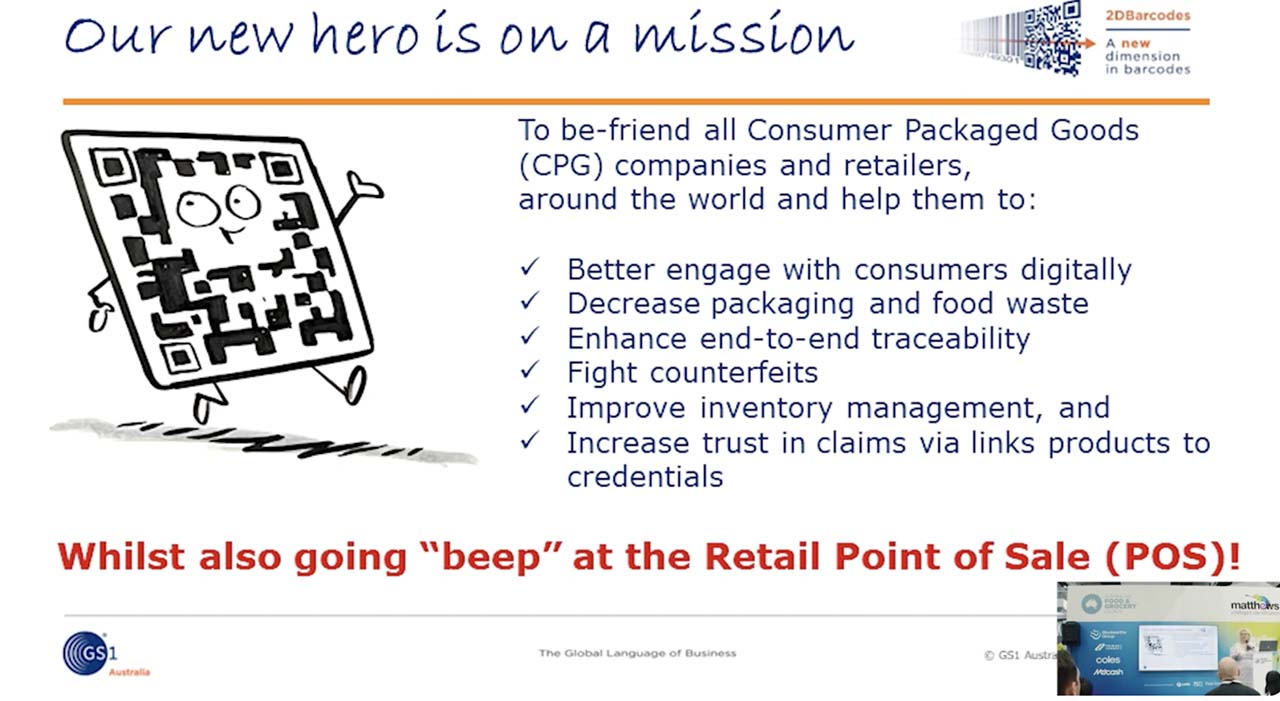Apr 24, 2024 by Mark Dingley
By 2027, 2D barcodes will be scannable at all retail points of sale. Is your brand ready to unlock the opportunities held by this tiny barcode?
At our APPEX 2024 Retailer Engagement Hub, Sue Schmid from GS1 Australia shared real-world examples of how 2D codes can be used to add value.
Here, we explore the real-world 2D barcode examples.
2D barcodes are embedded with data and use both vertical and horizontal directions.
The most common 2D code is the QR code, which is on everything from restaurant tables to help you order to outdoor ads and packaging.
Another type of 2D code is GS1 DataMatrix, which looks very similar to a QR code and is increasingly replacing the EAN13 in retail.
The biggest advantage of 2D barcodes is their ability to encode a lot of data. A 1D barcode generally holds 8-30 numbers, but a 2D code can hold 3,000-plus numbers or characters in a smaller area of space.
2D barcodes can carry details such as the EAN number, batch/lot number, website links, expiry date, weight (for variable weight products), price, serial number and more.
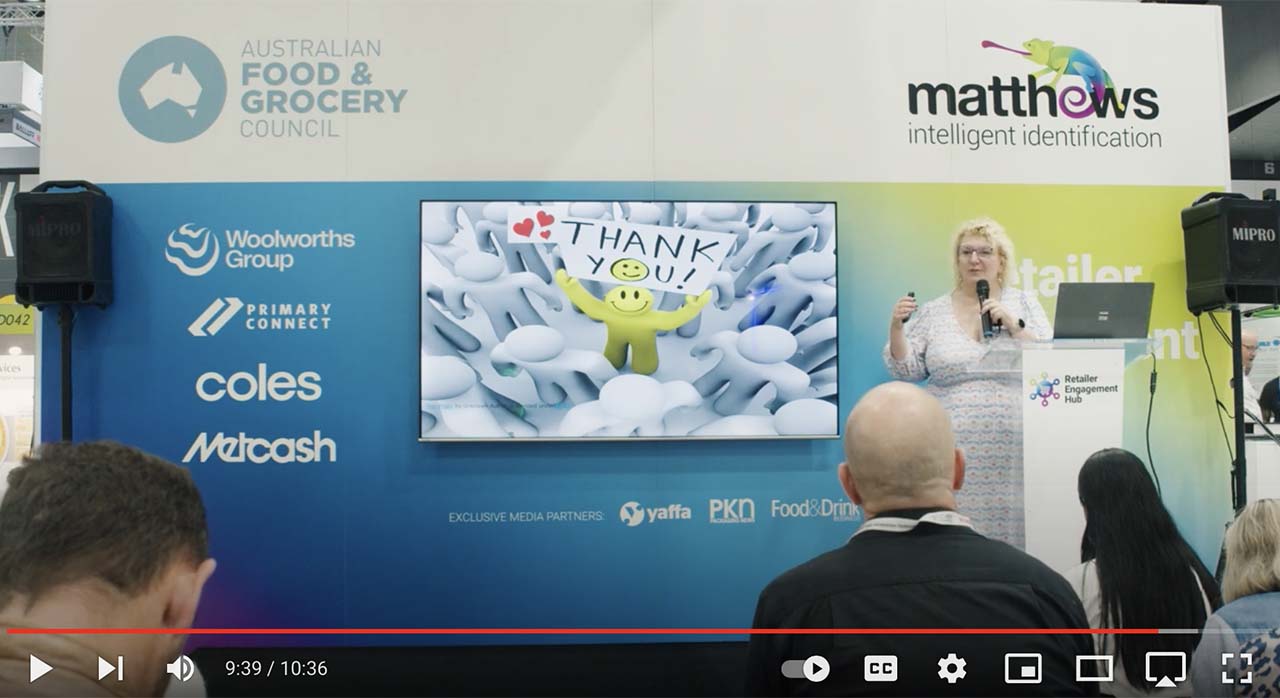
Type of 2D barcode: GS1 Matrix, with GTIN and the best-before date.
"Woolworths is ahead of the game," said Sue Schmid in her presentation For the past four years, Woolworths has been using 2D codes to improve the quality and safety controls at the point of sale. The supermarket giant is now scanning over nine million 2D codes at point of sale each week.
Using 2D codes, Woolworths can manage stock by expiration data and prevent the sale of expired products at point of sale.
2D barcodes also enable more targeted and accurate product recalls. Encoding a product's batch, lot, and/or serial number into a 2D barcode allows products to be identified anywhere in the supply chain, and only those products in the specific recalled batch need to be withdrawn from store shelves.
If the recalled product reaches the checkout, the barcode can alert the cashier and the customer that the item mustn't be sold. This is a massive win for food safety.
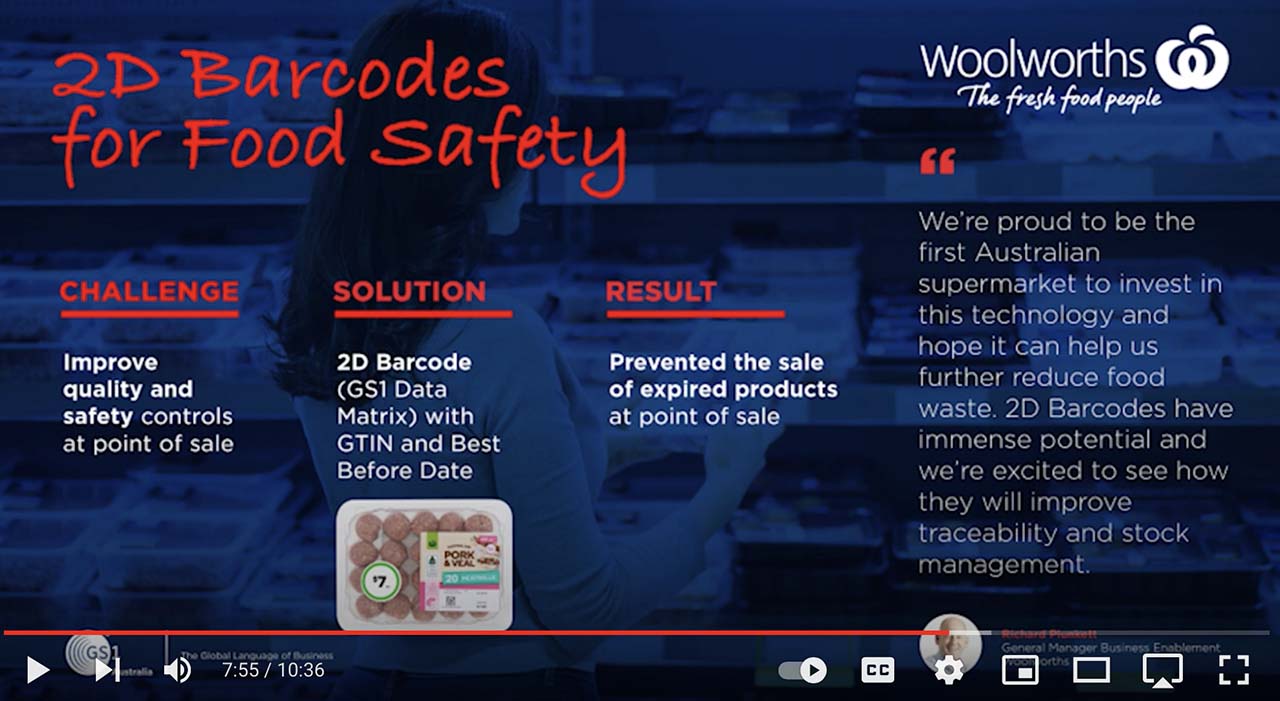
Type of 2D barcode: GS1 Matrix, with GTIN and the best-before date.
Another major challenge faced by Woolworths was food waste. The supermarket giant wanted to significantly reduce food waste to meet its sustainability goals.
2D barcodes provide part of the solution. Using 2D barcodes, retail teams can quickly and easily identify if a product is approaching its expiry date. They can then proactively mark down the price, ensuring the product can be sold quickly rather than disposed of.
As a result of its improved best-before-date management, Woolworths has seen a 40% reduction in waste of products with a 2D code.
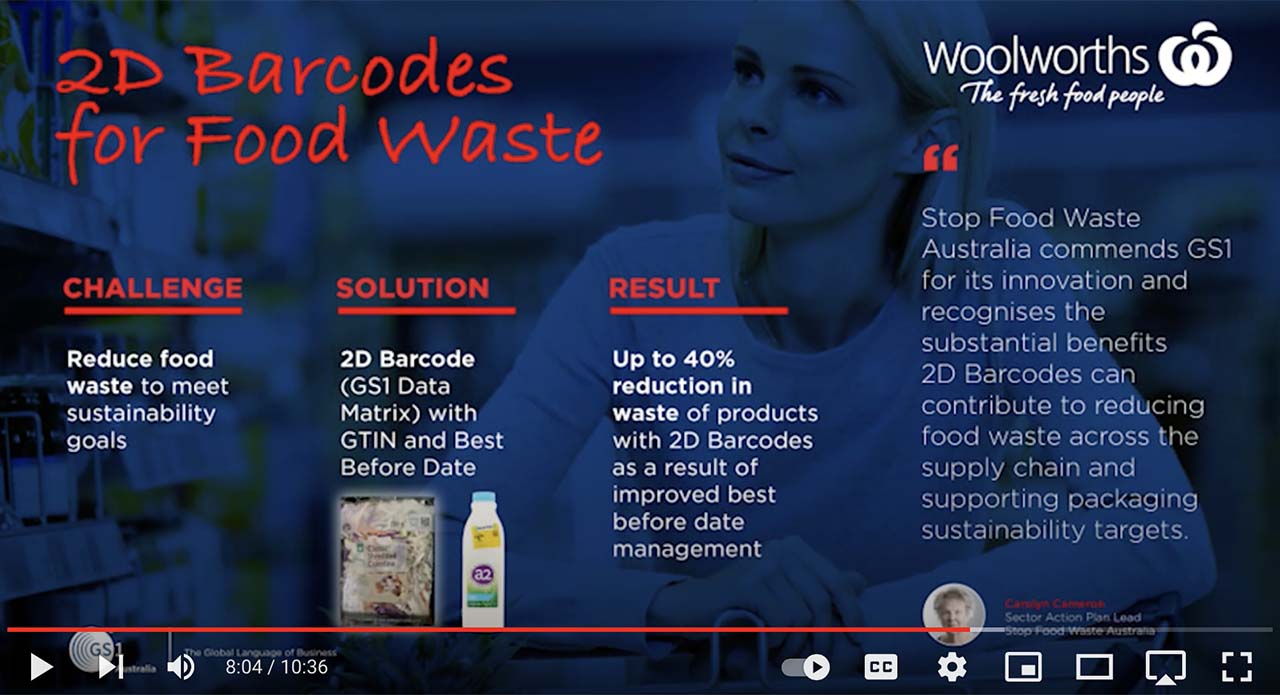
Type of 2D barcode: QR code with GS1 Digital Link with GTIN and variable product information.
According to a report from AgriFutures Australia, food fraud costs the Australian economy $3 billion every year. This damages consumer trust and presents a food-safety risk, such as when harmful chemicals were found in baby formula in China.
As Ben Lovitt, Head of Marketing from Nutura Organic, said, "In a category dominated by the importance of safety and food security, traceability and demand for anti-counterfeit mechanisms will only continue to grow."
Nutura Organic, an infant formula and toddler milk brand, wanted to fight fraud in its domestic and export markets. Known for its rigorous pharmaceutical-grade safety and manufacturing standards, Nutura Organic had a strong brand reputation to uphold as it established a large export market across China, Macau, Malaysia and beyond.
At the same time, the infant nutrition market is both tightly regulated and has high consumer expectations. Consumers want to be sure that the products they feed their children are safe and genuine.
With a QR code and GS1 Digital Link on every product, consumers in Australia and globally have a simple way to verify authenticity, resulting in more robust brand protection and trust.
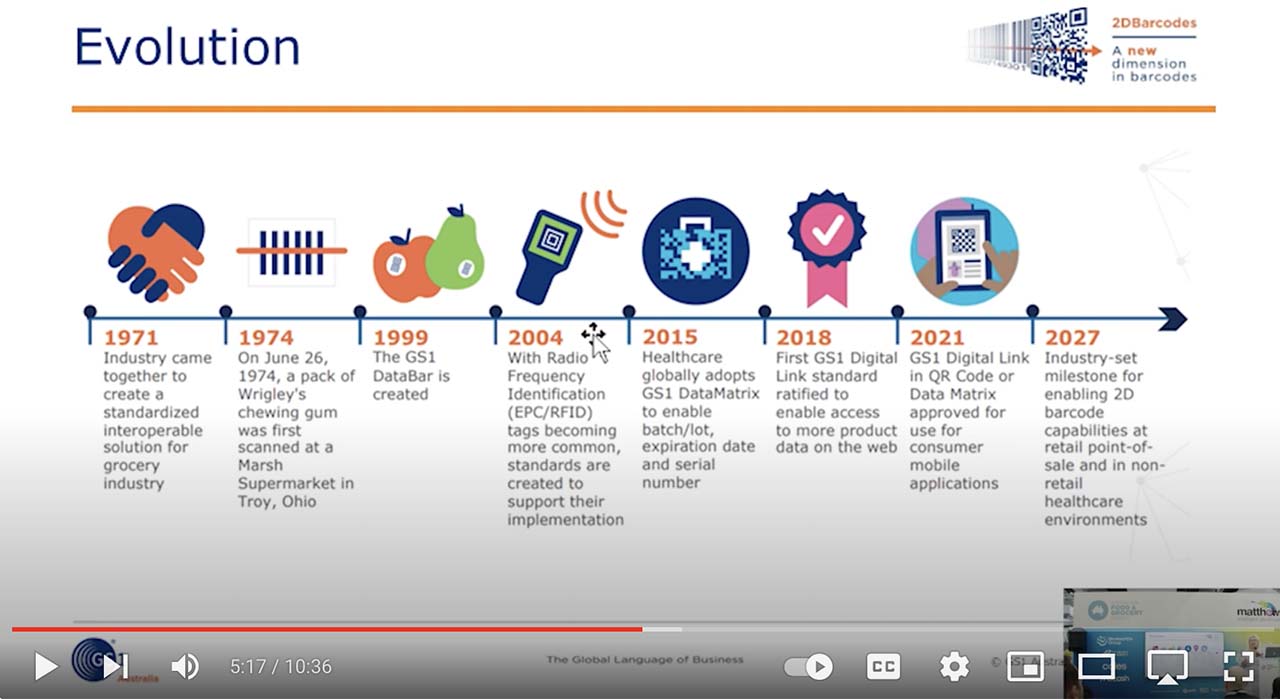
Type of 2D barcode: QR code with Digital Link with GTIN and variable product information
Table grapes are Australia's largest fresh horticulture export. The Australian Table Grapes Association (ATGA) wanted to improve consumer engagement and trust in the export market by digitally sharing traceability and quality data for grapes.
They used GS1 Digital Link-enabled QR code labels - each unique and serialised - allowing automated data sharing with every business in the supply chain. The QR code provides full end-to-end traceability and quality information with retail partners and consumers across 12 countries and five languages. As a result, 85% of consumers reported positive feedback.
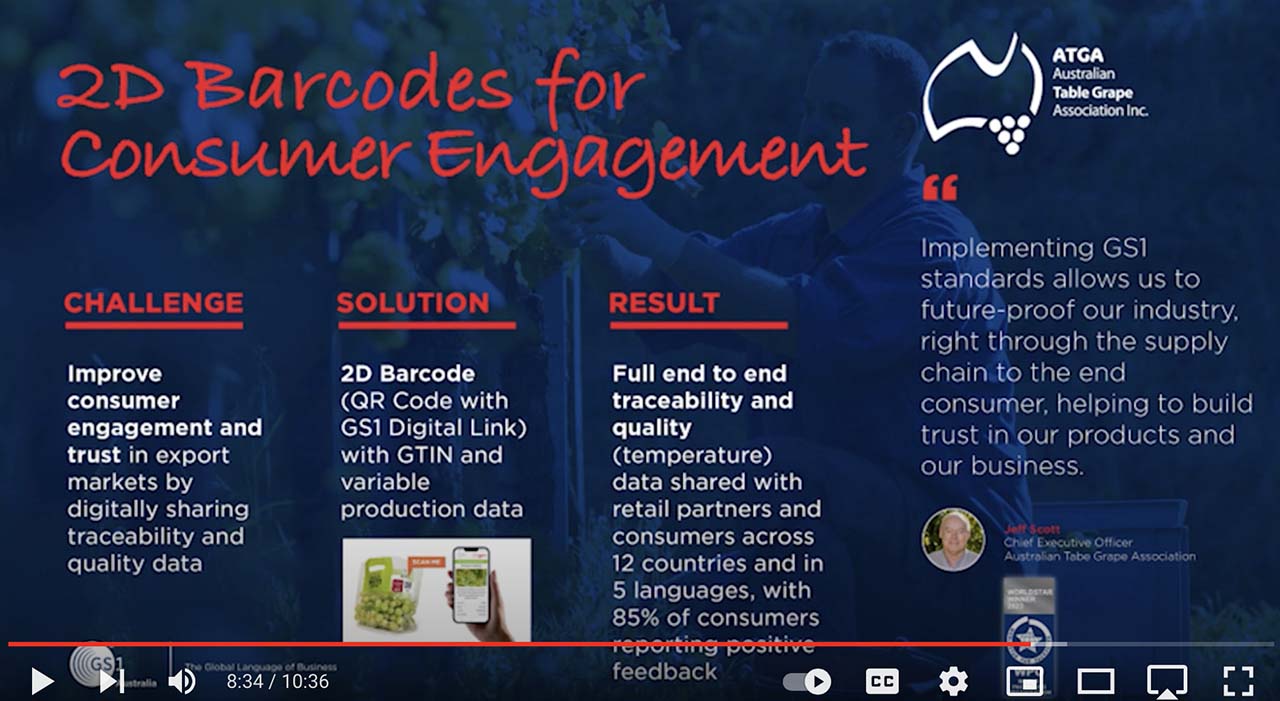
The barcode made the BBC's list of the top 50 things that made the modern economy. The internet has changed the way we do commerce. And now we have a barcode that links them together and opens the door to growth.
Learn more about 2D barcodes in our 2D Barcode Learning Centre and watch the 2D barcode sessions of our Retailer Engagement Hub at APPEX 2024.
